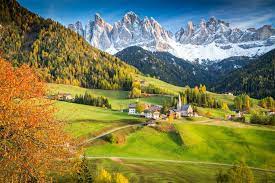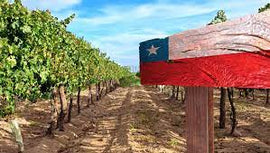TRENTINO-ALTO ADIGE/SUDTIROL
This month we’re taking it to the top, visiting Italy’s northernmost region and leading source of stunning Dolomite peaks, subsequent green valleys, and befuddling nomenclature. Even the above mouthful is an abbreviation, the hyphens and slashes at once repping and yadda yadda yadda-ing centuries of tradition, turmoil, contestation and change. But it’s worth it to do the toponomastics (a real, actual word I just learned that means: the research and study of place names) when it comes to Trentino Alto-Adige; the guises it has gone through over the years are the story of the place, inscriptions of its singularity, in terms of wine and every other thing.
Trentino-Alto Adige holds a special, semi-autonomous status and consists of two territories: Alto-Adige in the north, also known as Sudtirol, which corresponds to the autonomous province of Bolzano, and Trentino in the south, corresponding to the autonomous province of Trento. Though this arrangement dates back to 1948, the last local holdouts only officially accepted it in 1992. The population of Bolzano is largely German-speaking, while Trento primarily uses Italian.
You can trace this bifurcation back to the Romans, who invaded in 15 BC and divided the area into two separate states. Following the fall of the Empire, the Bavarians took over present day Alto Adige, while the Longobards extended their influence to the Duchy of Trento. The two provinces then spent centuries as contested spaces for invasions, peasant rebellions, various struggles between Church and Empire - and were mostly administered separately, before Napoleon briefly united them, and named the northern part Alto Adige to efface its prior relationship with Tyrol. After his exile, the place passed into the hands of the Hapsburgs, where it was again called Tyrol - though today’s Alto-Adige/Sudtirol was sometimes referred to as Mitteltirol, i.e. Middle Tyrol while Südtirol, i.e. South Tyrol, indicated mostly today's Trentino, which is not called Sudtirol anymore.
Confused? There’s more: after World War I de-fenestrated the Austro-Hungarian Empire, the whole region was awarded to Italy, just in time for Mussolini to engage in a campaign of forced Italianization, outlawing references to Tyrol and renaming it Venezia Tridentina to emphasize a historical link with one of the Roman states that used to constitute it. Nazi Germany also occupied its heights for a brief period, but several post-war treaties between Austria and Italy later, things seem as settled as plausible: a 2006 attempt to mount a referendum, in which the electorate could vote to stay with Italy, become fully independent or return to Austria, was soundly rejected.
It’s possible wine is what holds them together, as viticulture in the area predates the oldest surviving monikers for it. The Raeti, the alpine tribe the Romans replaced, were already storing their wine in wooden vessels when the latter (still using leather bags and amphorae) showed up, and adopted the technique. Later, German nobility and monasteries, began making and consuming wine in the area - the Abbazia di Novacella (Kloster Neustift) was built in 1840 and it remains active, making it one of the oldest functioning wineries in the world. Today, Trentino-Alto Adige boasts one of the most unique and variegated winemaking scenes anywhere: responsible for less than one tenth of Italy’s total wine production, it leads the country in wines meriting a DOC (Denominazione di Origine Controllata) designation, as 98% of the output qualifies. Though there are still a lot of individual producers (including both of our bottlings here)) 70% of the wine is made in large communes across a jigsaw of small vineyards with different exposures, elevations and microclimates, featuring soil types ranging from volcanic porphyry to weathered rock soils composed of quartz and mica, to limestone and dolomite, to sandy marl. The grapes are a mix of international varietals like Pinot Blanc, Pinot Noir, Chardonnay and Sauvignon Blanc (many introduced by Archduke Johann of Austria during the Habsburg reign) and indigenous varietals grown nowhere else.
Our selections this month furnish a little bit of each: the white, Manincor’s Contessa Bianco, is a blend of Chardonnay, Sauvignon Blanc and Pinot Blanc, made by one of the oldest and largest estate wineries in the area. The red is 100% Lagrein, a local varietal whose praises were first sung by Holy Roman Emperor Charles IV in 1370.
Prost/Salut!
Alan Hicks - Wine Buyer, Noe Valley
|
Manincor Riserva di Contessa Bianco 2021 |
|
|
Region: Alto-Adige/Sudtirol Terlaner DOC |
About the Winery: Situated in the midst of the hills surrounding Lake Caldaro, Tenuta Manincor was founded in 1606 by Hieronymus Manincor zu Ehrenhausen. The ancestors of today’s owner, Count Michael Goëss-Enzenberg, became related to Manincor zu Ehrenhausen in 1662 through marriage, so there is a direct lineage of some 350 years. Count Michael has owned and run Manincor since 1977, in which time it has become the largest estate winery in Südtirol. A brand new winery opened in 2004, built substantially beneath the vineyards, so as not to disturb the landscape of the area. Small organic vineyard parcels are farmed at 722 – 1,640 feet above sea level, with a wide variety of soils. Winemaking is as natural as possible, and the slope of the cellar site is utilized to move grapes and must by gravity though the winemaking process. About the Winemaking: Two-thirds of the grapes come from the ''Lieben Aich'' site at Terlan and one third from the ''Campan'' vineyard at Kaltern. The Lieben Aich vineyard at Terlan is on a warm, west-facing slope at an altitude of 300m above sea level where the soil is well-drained consisting of sand and clay with a bedrock of eroded porphyry. Kaltern Campan is a cool, east-facing mountainside site at an altitude of 500m above sea level where the soils are rich with clay and morainal deposits. Grapes were de-stemmed and left to macerate in the press for six hours to leach out aroma substances and body from the skins. Fermentation was done in oak barrels with yeasts naturally occurring in the vineyard. The young wine was subsequently matured on the fine lees for nine months to enable the aromas and flavors to evolve. Pinot Blanc 51 %, Chardonnay 31 %, Sauvignon Blanc 18 % Tasting Notes: Full yellow with green reflexes. The nose is characterized by an aroma of apple, apricot and a hint of sage; tightly knit, elegant and mellow on the palate with refreshing acidity on the finish. |
|
Winemaker: Helmuth Zozin |
|
|
Price per bottle / per case $30/$324 |
|
|
Suggested Food Pairing: Roasted Filet of salmon with a herb breadcrumb topping, Traditional spinach dumplings, called strangolapreti, or applesauce-glazed pork chops with sautéed mushrooms. |
|
|
Franz Gojer Lagrein Granat 2021 Südtiroler Lagrein DOC |
|
|
Region: Alto Adige Südtiroler Lagrein DOC |
About the Winery: Franz Gojer is a master of Schiava and Lagrein. These two varietals which find their homes in the northern reaches of the Alto Adige are about as far from the mainstream as you can get, but each is a truly unique and vibrant example of the best that this mountainous region can produce. Franz inherited his winery in 1982. Called Glögglhof, it is located on a small hill just north of the town of Bolzano in the center of the Santa Maddalena appellation. He has six hectares of vineyards with an additional two that he leases. From these vineyards he produces about 45,000 bottles per year. The vineyards are all located on fairly steep hillsides with the vines trained in the traditional Pergola system. For the Schiava, they plant mainly on well aerated sandy soils, while the Lagrein is planted on stony, alluvial soils in the wash of the Isarco River. All the vineyards have a fair amount of volcanic porphyry rocks interspersed with chunks of granite and gneiss. About the Winemaking: In the vineyards, all the work has to be done painstakingly by hand, including the harvest. The wines are fermented in tank using selected yeasts (trials over several vintages using indigenous yeasts did not yield the desired results). After pressing, the fermented must is transferred to large botti for an elevage of 8 to 9 months before being bottled. Only the Lagrein Riserva is aged in barrique, with about 30% new wood used each year. All the wines are held in bottle for several months before being released. The " Granat " grows in two different vineyards, one of which brings strength and structure, while the other one brings delicacy and complexity. The wine is hand-picked and processing is gentle. There is a 12 day maceration followed by controlled fermentation in big oak barrels which are lightly toasted. Malolactic fermentation and further maturation in large wooden barrels. Tasting Notes: Dark crimson. It has blackcurrant and chocolate flavors with spicy notes. Meaty and full-bodied with distinct herbal notes and warm tannins. Well-structured with pleasant acidity. |
|
Winemaker: Franz & Florian Gojer |
|
|
Price per bottle / per case $29/313.20 |
|
|
Suggested Food Pairing: Tyrolean Goulash Aged Alpine cheeses like: Piave Vecchio, Montasio, Gruyère, and Comté. Pepperoni Pizza Pork Schnitzel Roasted Root Vegetables
|
|
Canederli (Tyrolean Bread Dumplings)
Canederli is the Italian name given to the bread dumplings popular in Austria and this part of Italy, known in German as Semmelknödl or just knödel. The technique is similar to making potato dumplings or gnocchi, but actually easier.
Ingredients (serves 4-6)
- 300g (3/4 lb.) stale bread, cut into cubes
- 100g (1/4 lb.) speck or other cured pork product finely minced
- 2 eggs
- A glass of milk
- 1 medium onion, finely minced
- 2 Tbsp. flour (or more)
- Parsley, finely minced
- Salt and pepper
Instructions
- Toss together in a large bowl the bread and speck, then add the eggs and milk and parsley
- Mix together. Let the mixture rest for a good 20 minutes or so. The bread should be rather moist at this point, but not soaking wet. If you find the mixture a bit dry, then add more milk
- Mix in the flour, along with the onion and parsley. (NB: For added flavor, you can sauté the onions in a bit of butter before adding them to the mix)
- Season well with salt and pepper. Form the resulting ‘dough’ into balls about the size of golf balls
- Bring a pot of well-salted water (or, for a richer taste, broth) to a gentle simmer
- Add the canederli, one at a time, with a slotted spoon, if it falls apart, then you know you need to add some more flour to your mixture
- Simmer the canederli for about 15 minutes. They should have come to the surface of your simmering liquid, much as gnocchi do
- You can serve them either in a rich broth, or with a creamy mushroom sauce. Unlike pasta or gnocchi, however, you do not generally pour the sauce over or mix it with these bread dumplings, but rather lay down a ‘bed’ of your sauce and lay the dumplings on top.





